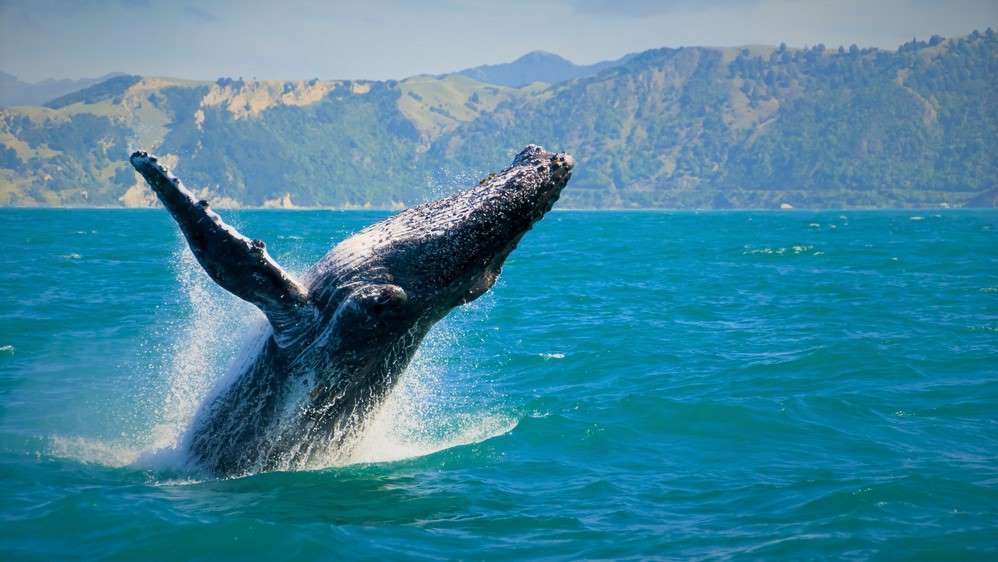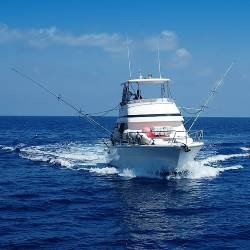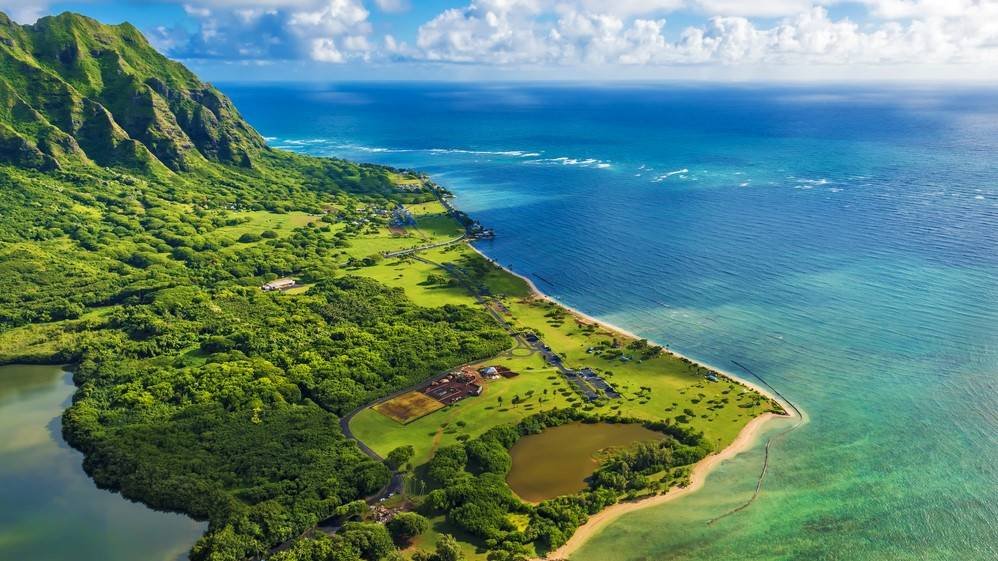Hawaii Whale Watching Tours: Ultimate Guide + Best Operator
Hawaii, a paradise known for its breathtaking natural beauty and diverse flora and fauna, is the ultimate destination for nature lovers. Among the multitude of outdoor activities that Hawaii offers, whale watching stands out as a truly unforgettable experience.
This article serves as a guide for those planning a memorable whale watching tour in Hawaii by providing insights on the best locations, tour types, and tips for a responsible, eco-friendly experience.
Whale Watching in Hawaii

Humpback Whales: The Stars of the Show
Humpback whales (Megaptera novaeangliae) are social mammals that can reach up to 63 feet in length and weigh around 40 tons. Their beautiful songs, sung by males, can last from 4 to 33 minutes and are a hallmark of these magnificent creatures. Humpback whales play a crucial role in maintaining the health of oceans and symbolize renewal and hope in Hawaiian culture.
Whale Watching Season: Timing Your Visit
Whale watching season in Hawaii takes place during the winter months, typically from December 15 to May 15. However, the peak season for sightings spans from January to March when humpback whales migrate from Alaska to Hawaii to breed and give birth. Early mornings are considered the best time for whale watching, and it’s advised to bring binoculars and wear sunscreen for an optimal experience.
Whale Watching Regulations: Protecting Our Marine Friends
To ensure the protection of humpback whales and their environment, there are specific regulations in place for whale watching tours. Boats must maintain a distance of at least 100 yards from the whales, and it’s crucial to choose tour operators that adhere to these guidelines and prioritize the welfare of these marine giants.
Other Marine Life: More Than Just Whales
While humpback whales are the main attraction, a whale watching tour in Hawaii offers the opportunity to observe other fascinating marine life, such as dolphins, sea turtles, and various species of fish. Keep an eye out for these additional ocean inhabitants during your tour.
Hawaii Whale Watching Tour Locations
Hawaii’s main islands all offer unique whale watching experiences. Here are some popular locations for whale watching tours on each island:
| Island | Locations |
|---|---|
| Oahu | Waikiki, Honolulu, North Shore, West Oahu |
| Maui | Lahaina, Ma’alaea Harbor, Kihei |
| Big Island | Kailua-Kona, Hilo |
| Kauai | Lihue, Port Allen |
Types of Whale Watching Tours

Boat Tours: Sailing the Seas
Boat tours are the most common type of whale watching tours and can be tailored to different group sizes and preferences. Options include small group tours, large group tours, catamaran tours, and raft tours. For example, Tradewind Charters, Inc. in Honolulu offers ocean activities such as reef fishing and snorkeling aboard a 50-foot catamaran, providing an unforgettable experience with Captain Ken at the helm.
Kayak and Stand-Up Paddleboard Tours: Up Close and Personal
For a more intimate experience with nature, kayak and stand-up paddleboard tours allow you to explore Hawaii’s waters at your own pace. These tours require a certain level of physical fitness and may not be suitable for everyone.
Helicopter Tours: A Bird’s-Eye View
Looking for a unique vantage point? Helicopter tours offer a bird’s-eye view of whales and Hawaii’s stunning coastline. These tours can be pricier than the other options, but the breathtaking aerial perspective is well worth the investment.
Shore-Based Tours: Land-Based Whale Watching
If you prefer to stay on land, you can still enjoy whale watching from Hawaii’s scenic coastlines. Oahu’s eastern point, for example, offers opportunities for DIY whale watching. Bring binoculars and a comfortable chair for an enjoyable, budget-friendly experience.
Recommended Whale Watching Tour Operator: Tradewind Charters

Located in Honolulu, Tradewind Charters specializes in ocean activities and offers a variety of services, including reef fishing, swimming, snorkeling, and, of course, whale watching. Captain Ken, who sailed to Hawaii 35 years ago and never left, founded the company in 1985. With a passion for providing guests with an authentic Hawaiian experience, Captain Ken ensures a memorable adventure on the water.
The 50-foot catamaran used for the tours, built in 2017, comes equipped with a toilet, ice boxes, a bar, and catering options. Safety equipment and light spinning tackle with octopus bait are also provided for fishing enthusiasts.

During your tour, you’ll have the chance to encounter sea turtles, monk seals, eagle rays, and smooth waters teeming with marine life. Non-alcoholic drinks are included, and guests are welcome to bring their own beverages or order from the onboard bar. Snacks can also be pre-ordered or brought from home.
With a focus on accommodating families, birthdays, weddings, corporate events, and team-building activities, Tradewind Charters offers an unforgettable experience for groups of all sizes. Prices start at $2,450 for a charter.
Click here to book a Whale Watching Tour
Choosing the Right Whale Watching Tour: Factors to Consider
Before booking a whale watching tour, take into account the following factors to ensure the best experience:
- Group size: Some tours cater to small groups, while others can accommodate larger parties. Determine your group size before selecting a tour.
- Budget: Tours can vary in price, so consider your budget when choosing a tour type and operator.
- Duration: Whale watching tours can last from a couple of hours to a full day. Plan according to your schedule and preference.
- Physical abilities: Some tours, such as kayaking or paddleboarding, require a certain level of fitness. Keep this in mind when selecting a tour type.
- Preferences: Each tour offers unique experiences, so consider whether you prefer a more intimate setting, a bird’s-eye view, or a land-based experience.
Researching and reading reviews can help you find a reputable tour operator that meets your specific requirements. Also, ensure the operator follows necessary permits, regulations, and employs experienced staff.
Preparing for a Whale Watching Tour: What to Bring and How to Prevent Seasickness

To make the most of your whale watching tour, be prepared with these essentials:
- Clothing: Wear comfortable, weather-appropriate clothes and footwear. A hat and sunglasses will protect you from the sun.
- Sunscreen: Apply sunscreen generously to avoid sunburn during your time on the water.
- Binoculars: Enhance your whale watching experience by bringing binoculars for a closer look.
- Camera: Capture the magical moments with a camera or smartphone.
- Snacks and drinks: Bring snacks and beverages if they are not provided by the tour operator.
To prevent seasickness:
- Take motion sickness medication before boarding.
- Focus on the horizon or a fixed point in the distance.
- Stay near the center of the boat, where motion is minimal.
- Avoid consuming heavy meals, alcohol, or caffeine before the tour.
- Stay hydrated and breathe deeply.
Responsible and Eco-Friendly Whale Watching: Guidelines and Choosing Green Providers

When embarking on a whale watching tour, it’s essential to practice responsible and eco-friendly behaviors. Here are some guidelines to follow:
- Choose a tour operator committed to protecting marine life and their habitat, adhering to regulations, and promoting conservation.
- Follow the instructions of the tour guide and respect the 100-yard distance rule to avoid disturbing the whales.
- Minimize noise and avoid throwing any trash or debris overboard.
- Be patient and let the whales dictate the encounter. Avoid chasing or encircling them.
When selecting a tour provider, prioritize those who prioritize sustainability and environmental preservation. Look for operators with eco-friendly certifications or affiliations with conservation organizations.
Combining Whale Watching with Other Activities: Making the Most of Your Hawaii Vacation

To fully immerse yourself in Hawaii’s natural beauty, consider combining whale watching with other exciting activities:
- Snorkeling, scuba diving, and sunset cruises: Explore the vibrant marine life beneath the surface or enjoy a romantic sunset on the water.
- Cultural and historical tours: Learn about Hawaii’s rich history and unique traditions.
- Nature excursions: Discover Hawaii’s lush landscapes through hikes, botanical gardens, and nature reserves.
- Water sports: Try your hand at surfing, paddleboarding, and other thrilling water activities.
Planning your Hawaii vacation with a variety of activities will make for a memorable and enriching experience.
Hawaii Whale Watching Events and Festivals: Celebrating Our Ocean Giants
Several events and festivals in Hawaii celebrate and promote whale conservation. Some of these include:
- Maui Whale Festival: Held annually, this event features various activities such as concerts, art shows, and educational presentations centered around whale conservation.
- World Whale Day: A part of the Maui Whale Festival, World Whale Day is celebrated with a parade, live music, food, and fun activities for the whole family.
- Whale Tales: This event, hosted by Whale Trust, features presentations by world-renowned scientists, photographers, and conservationists, showcasing their work and experiences with whales.
- Sanctuary Ocean Count: Organized by the Hawaiian Islands Humpback Whale National Marine Sanctuary, this event encourages volunteers to participate in counting humpback whales from the shore, contributing to valuable research and conservation efforts.
Educational Opportunities During Whale Watching Tours: Learning About Whales and Hawaii’s Marine Ecosystem

Whale watching tours not only provide unforgettable encounters with these magnificent creatures but also offer a chance to learn about:
- Whale biology and behavior: Understand the unique characteristics and fascinating behaviors of humpback whales, such as their songs, breaching, and social interactions.
- Conservation: Gain insight into the challenges faced by humpback whales, the efforts to protect them, and how individuals can contribute to their preservation.
- Hawaii’s marine ecosystem: Discover the diverse marine life inhabiting Hawaii’s waters and learn about the delicate balance of the ecosystem.
Capturing the Best Whale Watching Photos and Videos: Tips and Ethics
To document your whale watching experience, consider these tips for capturing stunning photos and videos:
- Camera equipment: Invest in a good-quality camera with a telephoto lens for close-up shots and a fast shutter speed to capture quick movements.
- Techniques: Practice patience and be ready to capture spontaneous moments. Look for telltale signs of whale activity, such as spouts, splashes, or tail flukes.
- Ethical considerations: Maintain a safe distance and avoid using flash photography or drones, which can disturb the whales.
Accommodations and Travel Planning for a Whale Watching Vacation: Choosing the Right Island and Location

When planning your Hawaii whale watching vacation, consider the following:
- Choose the island and location that best suits your preferences and offers the highest concentration of whale sightings. For instance, Maui’s Au’au Channel is known for its high humpback whale population.
- Find accommodations near whale watching tour providers for convenience and ease of access to tours.
- Look for travel packages and deals that include whale watching tours to save on costs and streamline your vacation planning.
Volunteer Opportunities and Citizen Science: Making a Difference for Whales
Participate in volunteer programs and citizen science initiatives to contribute to whale research and conservation efforts. The Sanctuary Ocean Counts program, for example, invites volunteers to assist in counting humpback whales from the shore, providing valuable data for researchers.
Conclusion
Embarking on a whale watching tour in Hawaii is an unforgettable experience that connects you with the awe-inspiring beauty of humpback whales and the rich marine life surrounding the islands. By choosing responsible tour operators and practicing eco-friendly behaviors, you can help ensure the continued presence and well-being of these magnificent creatures for generations to come.

